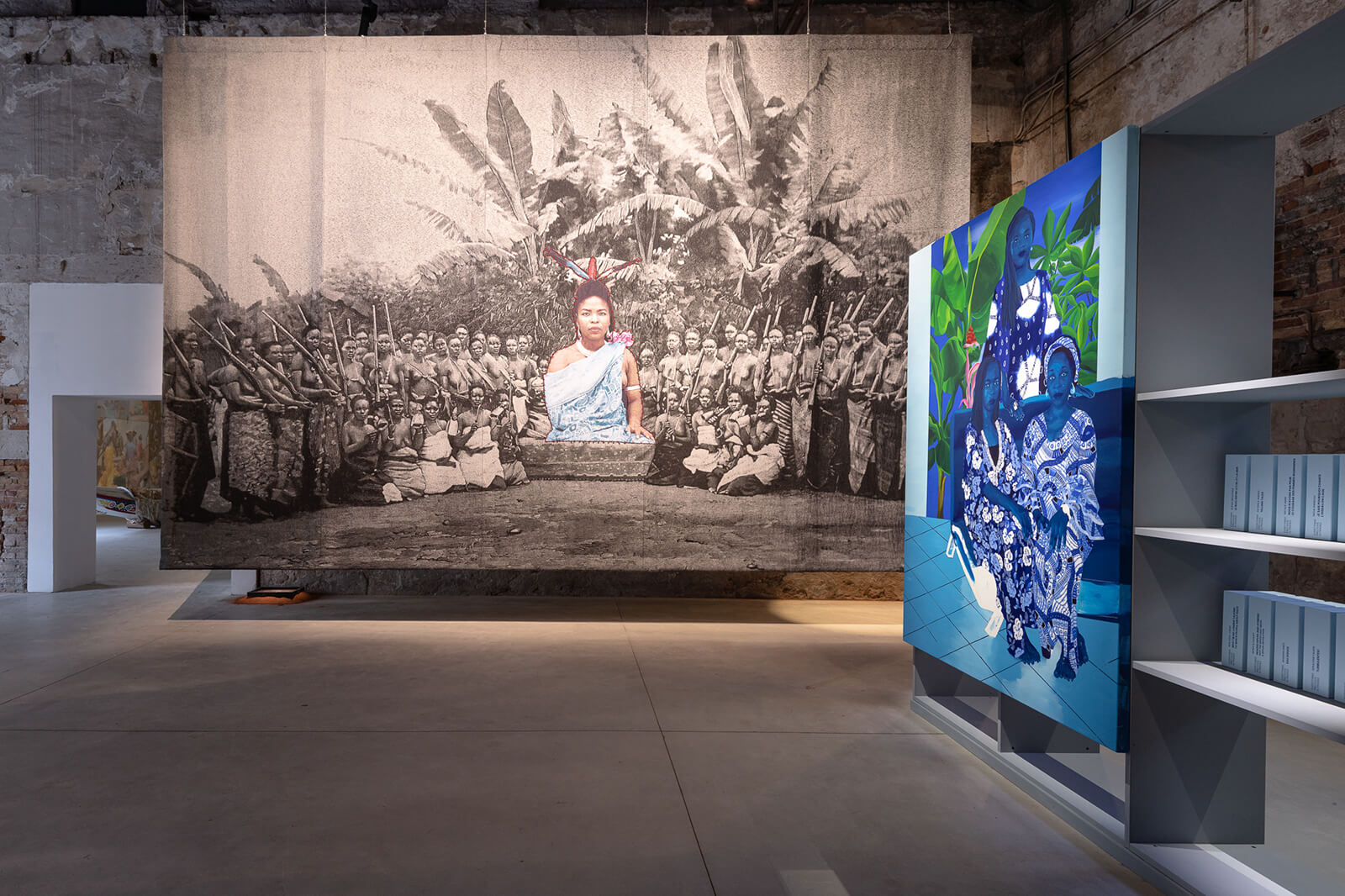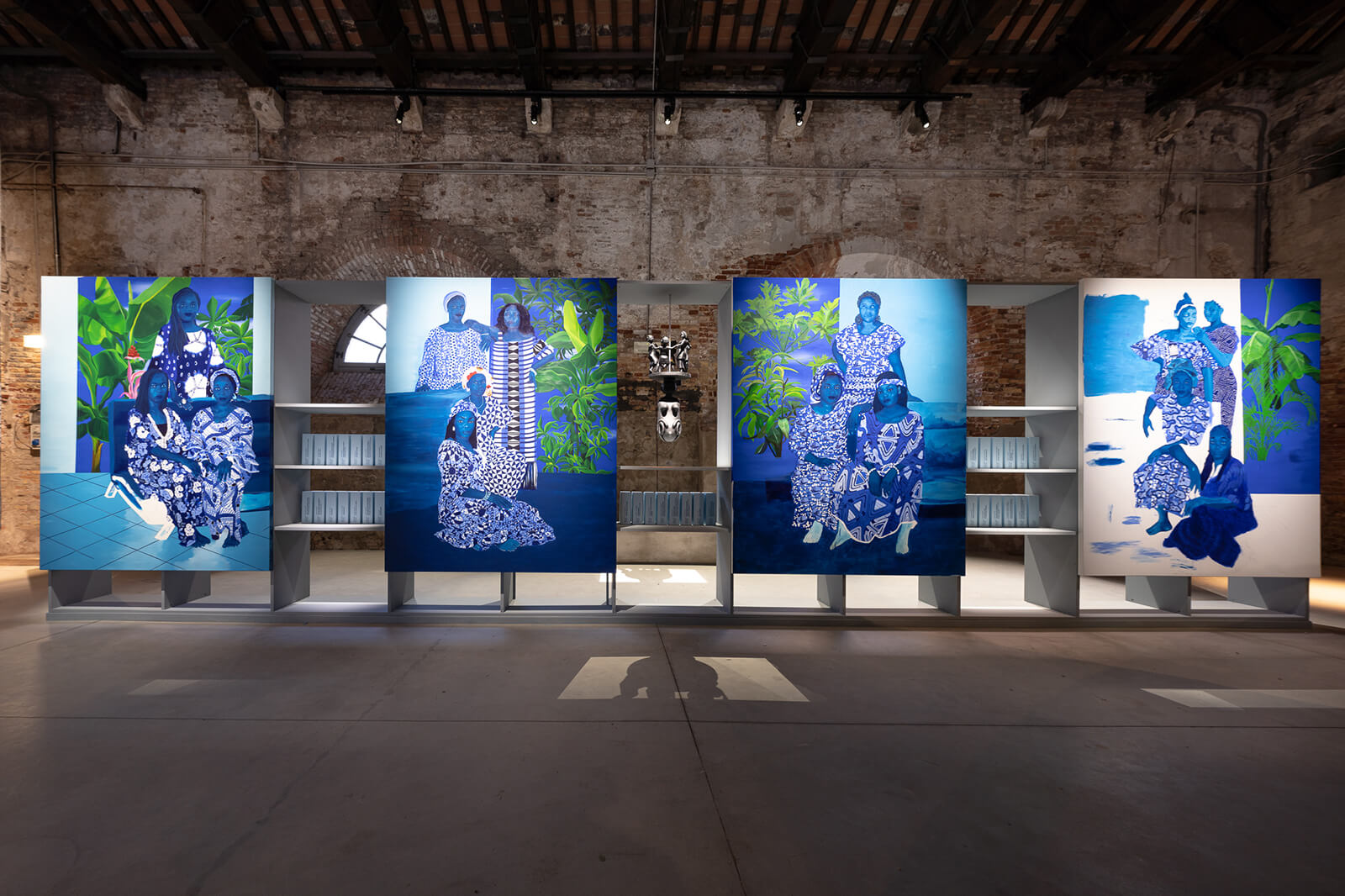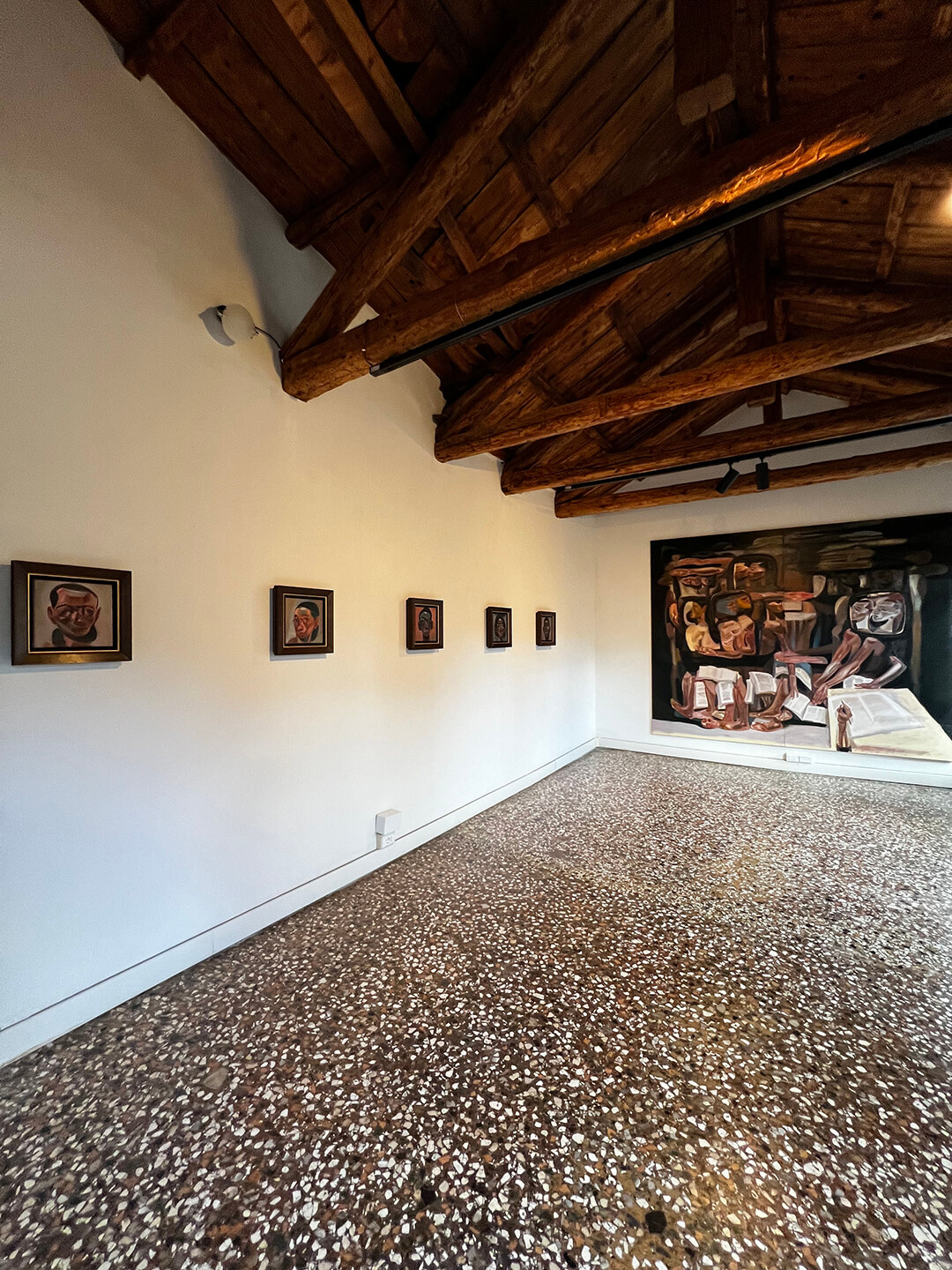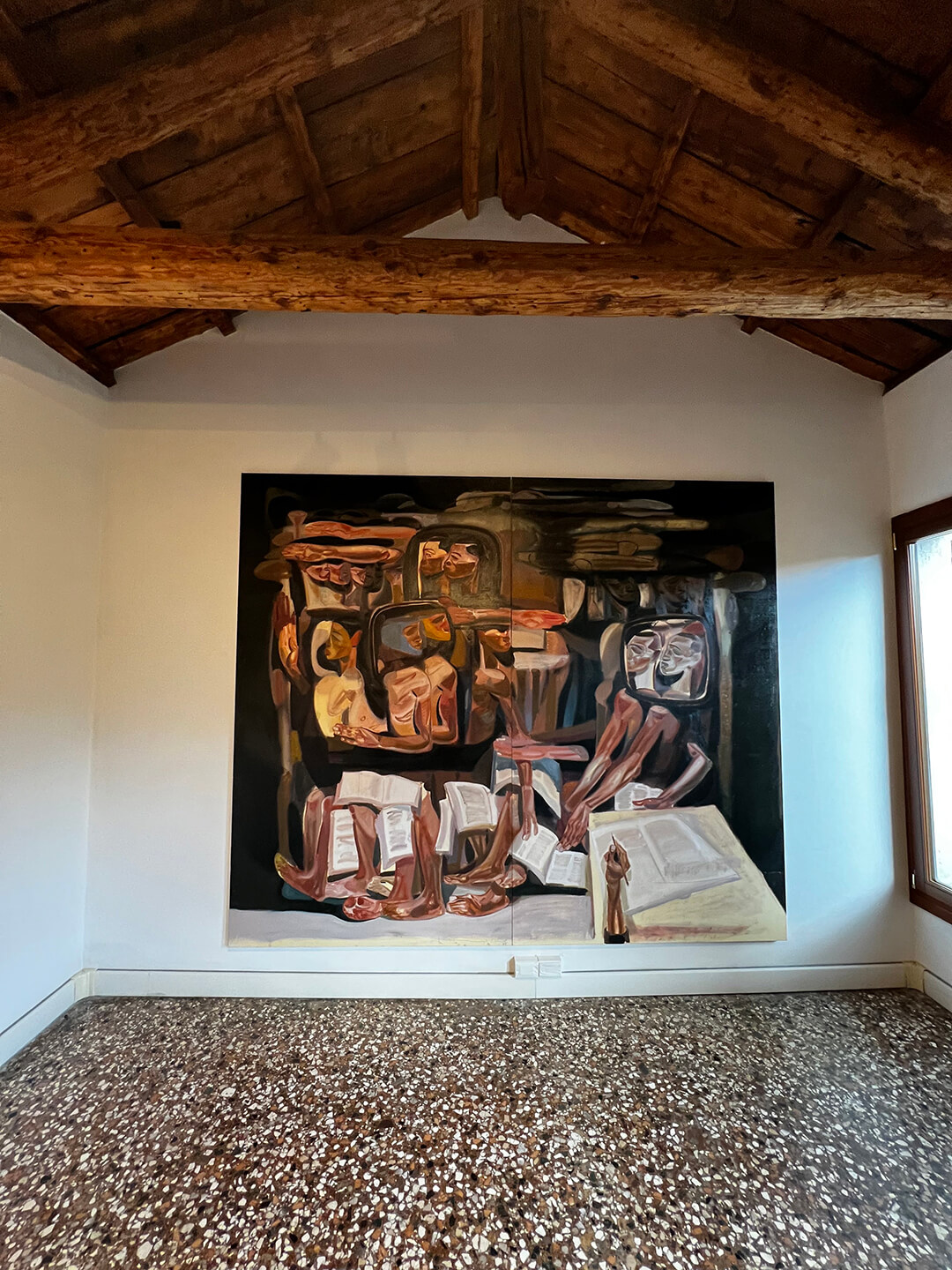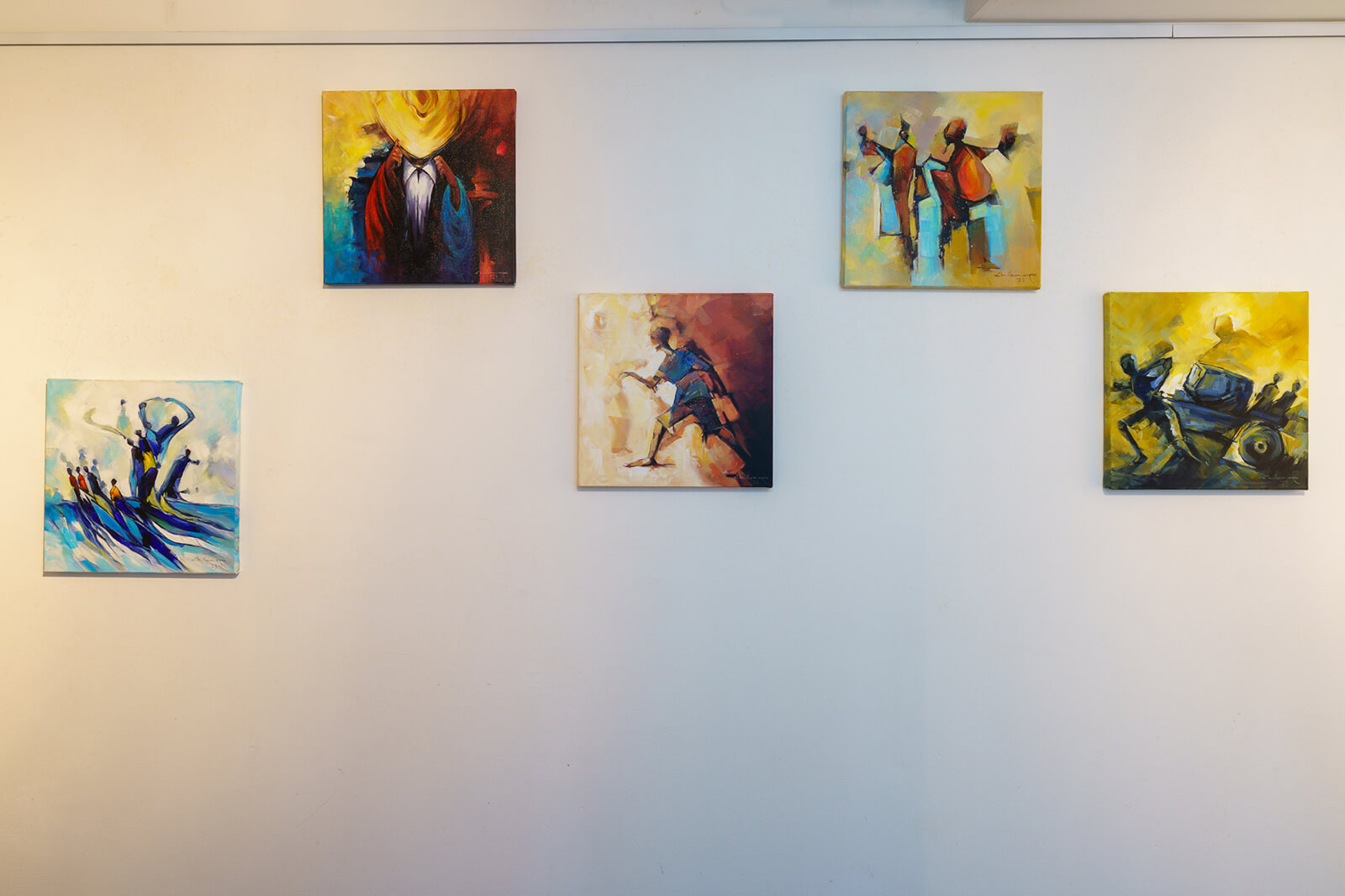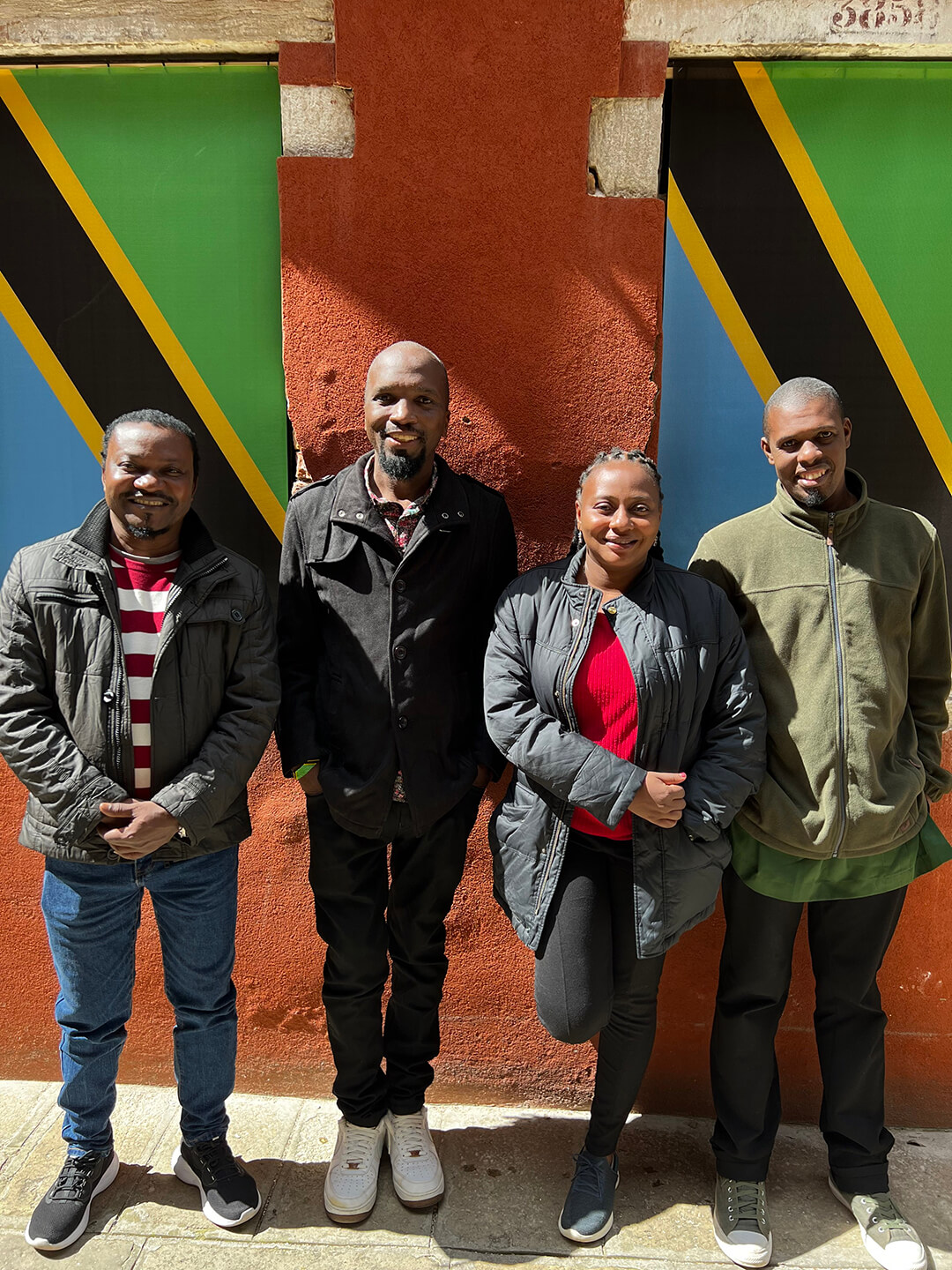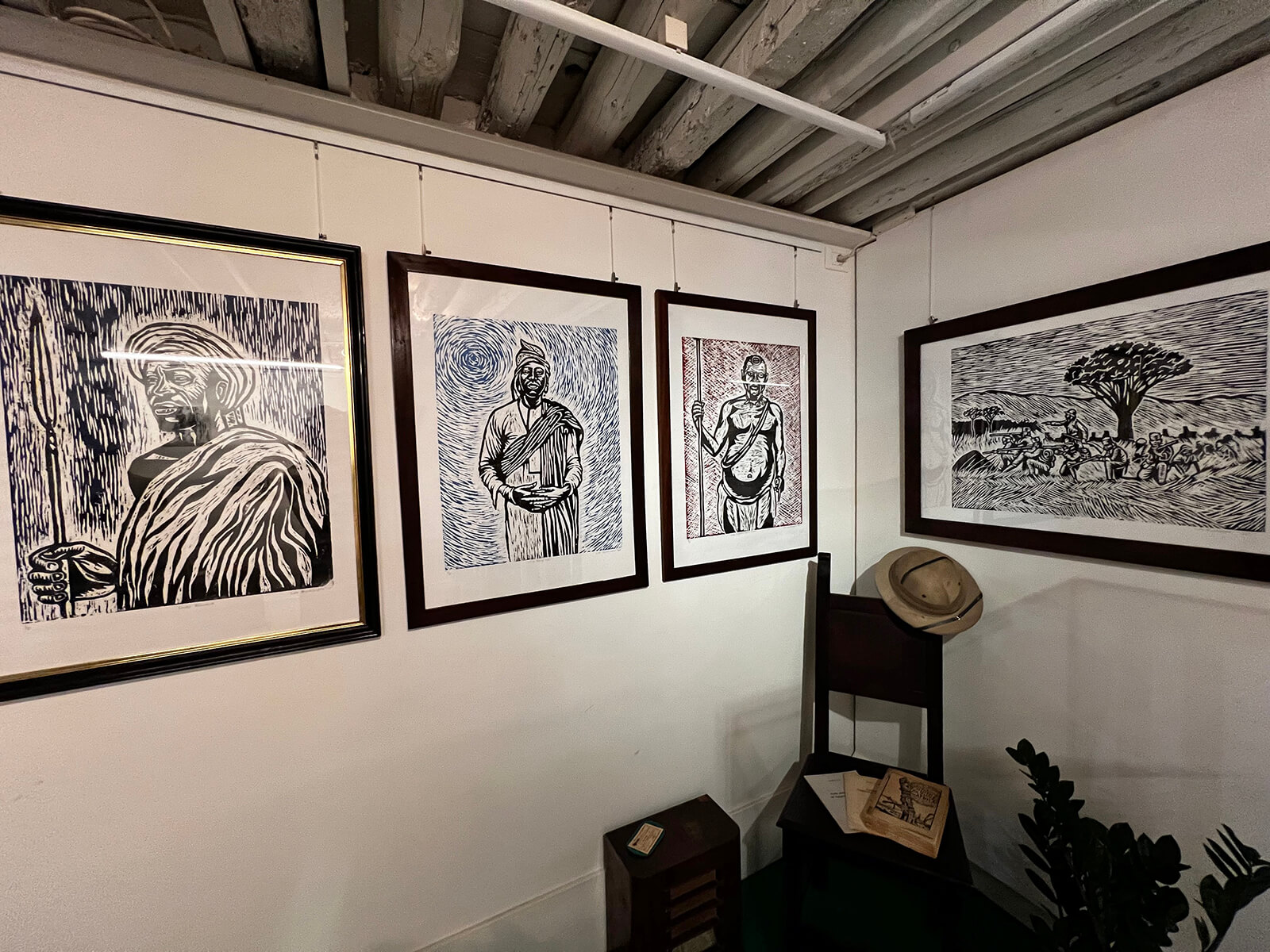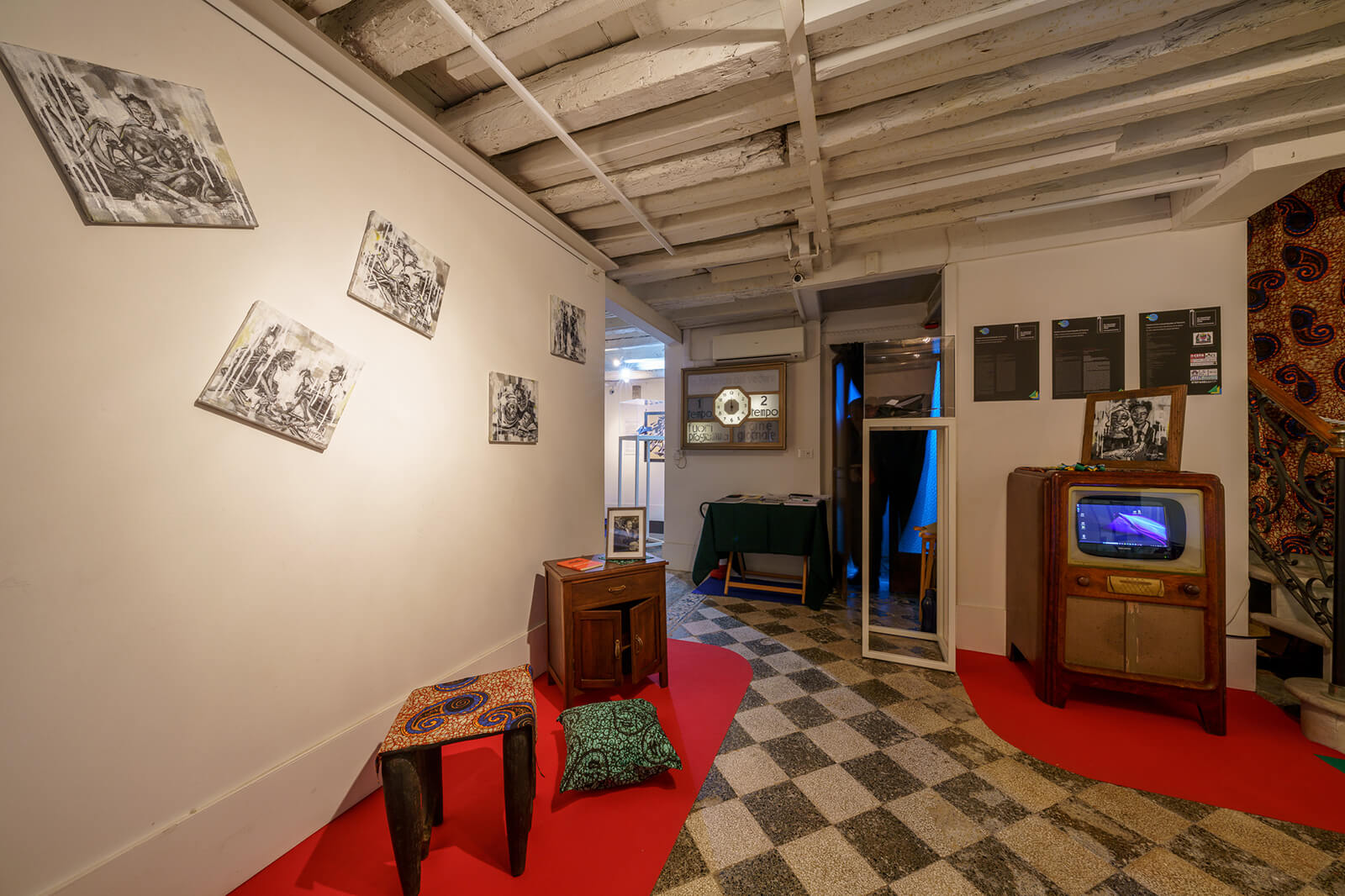The 60th edition of the Venice Biennale, curated by Adriano Pedrosa, exemplifies a transformative era in the representation of African artists within the official national pavilions. Notably, it introduces four inaugural African national pavilions from Benin, Ethiopia, Tanzania, and Senegal, contributing to 12 African countries represented—an increase from nine in 2022 and seven in 2019 and 2017. Despite this growth, the presence of African national pavilions remains relatively limited compared to the total number of participating countries, with 88 pavilions in total, considering Africa’s 54 nations. Only Egypt and South Africa have maintained permanent pavilions since the 1950s, highlighting the challenges other African nations face in participating. Financial and logistical issues often delay their involvement, with substantial production costs and venue-securing expenses presenting significant barriers. Navigating the complex logistics of the Venice location poses daunting challenges for newcomers, requiring a nuanced understanding of the multifaceted dynamics involved.
National pavilions typically operate within their countries’ frameworks, with exhibitions often funded by governments, businesses or galleries and validated by the Venice Biennale team. Overcoming these challenges requires the establishment of supportive networks and strategic partnerships to facilitate access without compromising artistic integrity. The African pavilions featured for the first time this year provide a vital platform for a plurality of perspectives from the African continent, increasing their visibility on the global stage, and signifying the impact of global market influences, the recent repatriation of artefacts to the continent, and evolving dynamics within the art world.
The theme of the Biennale’s main show, Stranieri Ovunque—Foreigners Everywhere, is a polysemantic expression that encapsulates the complexities of today’s geopolitical landscape, particularly the dynamics of human movement across countries, borders and territories. Despite these tensions, Pedrosa’s vision challenges the notion of boundaries by featuring artists who reflect experiences of immigration, diaspora and refugee-dom. Explicitly focussed on artists navigating between the Global South and Global North, migration and decolonisation emerge as central themes. Many national pavilions have also chosen to take on issues related to this theme, which is particularly pertinent for participating African nations.
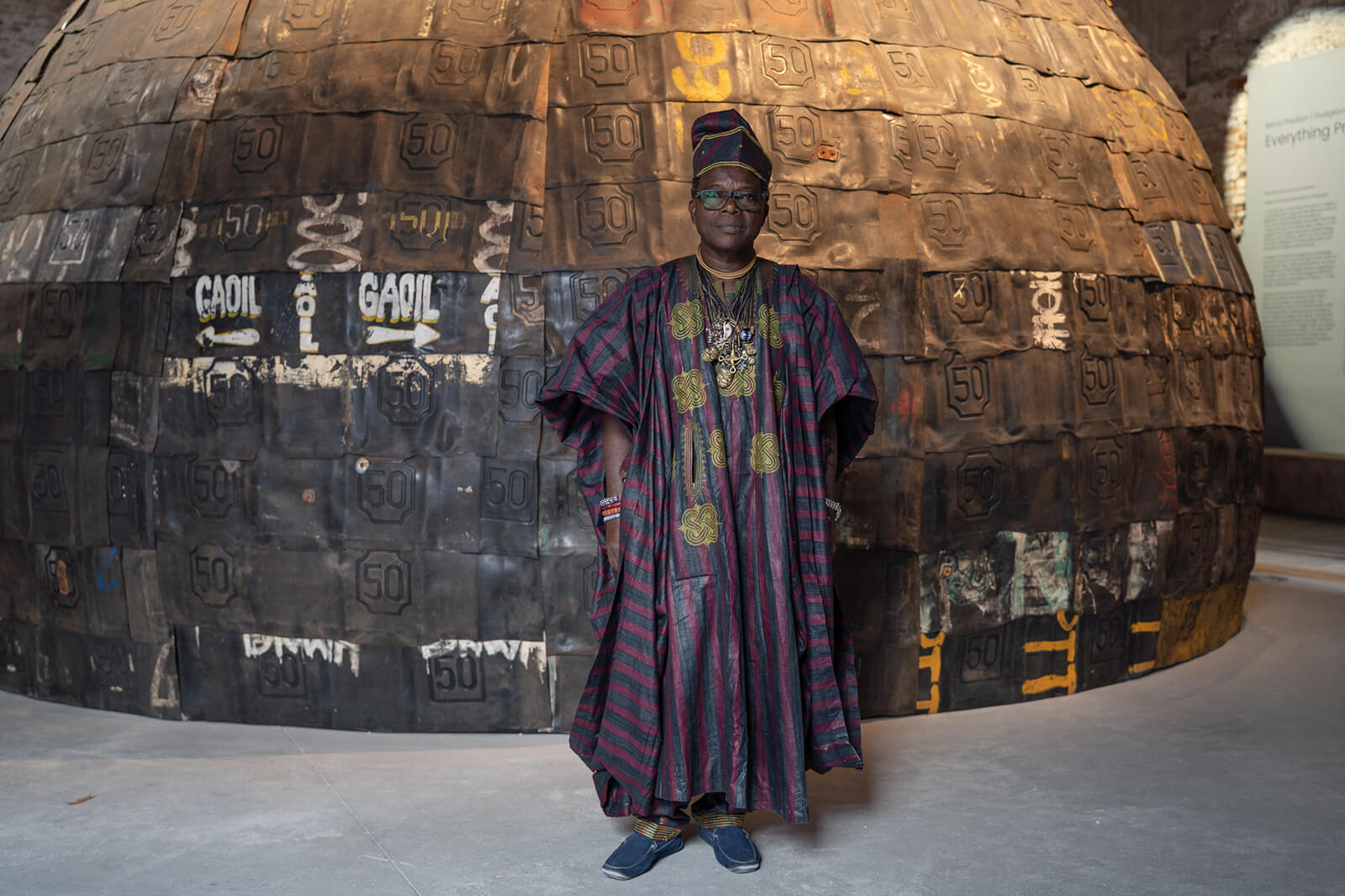
The Venice Biennale is renowned for its exclusivity, predominantly featuring Western countries and artists. Nonetheless, curators, artists and organisers have continually strived for international inclusivity. In the 45th edition (1993), Susan Vogel’s showcase of West African artists marked a crucial moment for art from the African continent, offering a platform for Senegal and Côte d’Ivoire artists. Similarly, Thomas McEvilley’s book Fusion: West African Artists at The Venice Biennale (1993) shed light on the contributions of African artists to the global art scene. A collateral exhibition during the 49th Venice Biennale (2001) titled Authentic / Ex-centric: Africa In and Out of Africa, curated by Salah Hassan and Olu Oguibe, also examined themes of representation and memory. The 50th edition (2003), which reimagined the exhibition format by dividing the Biennale into 10 semi-autonomous sections conceptualised by invited curators, built upon the discourse of visibility. This decentralised approach aimed to provide a polyphony of voices and perspectives in contemporary art, with each section contributing to the Biennale’s broader narrative. One of the shows was titled Fault Lines: Contemporary African Art and Shifting Landscapes and was curated by Gilane Tawadros.
In 2007, the 52nd edition faced criticism for the controversial African Pavilion, curated by Fernando Alvim and Simon Njami, which diverged from the format of individual country representations. However, the 55th edition (2013) marked a historic moment with the inaugural Angola Pavilion, showcasing Edson Chagas’s Luanda, Encyclopedic City, which won the Golden Lion for best pavilion. This was the first time that an African pavilion had won the award, and the recognition underscored the increasing relevance of African artists’ contributions.
In 2015, the 56th edition, All the World’s Futures, under curator Okwui Enwezor, the first African-born curator in its history, continued the Biennale’s shift towards an increased African presence. The year proved to be a defining moment for African art, with Ghanaian artist El Anatsui receiving the Venice Biennale’s Golden Lion for Lifetime Achievement. Subsequently, in 2019, Ghana showcased its first pavilion.
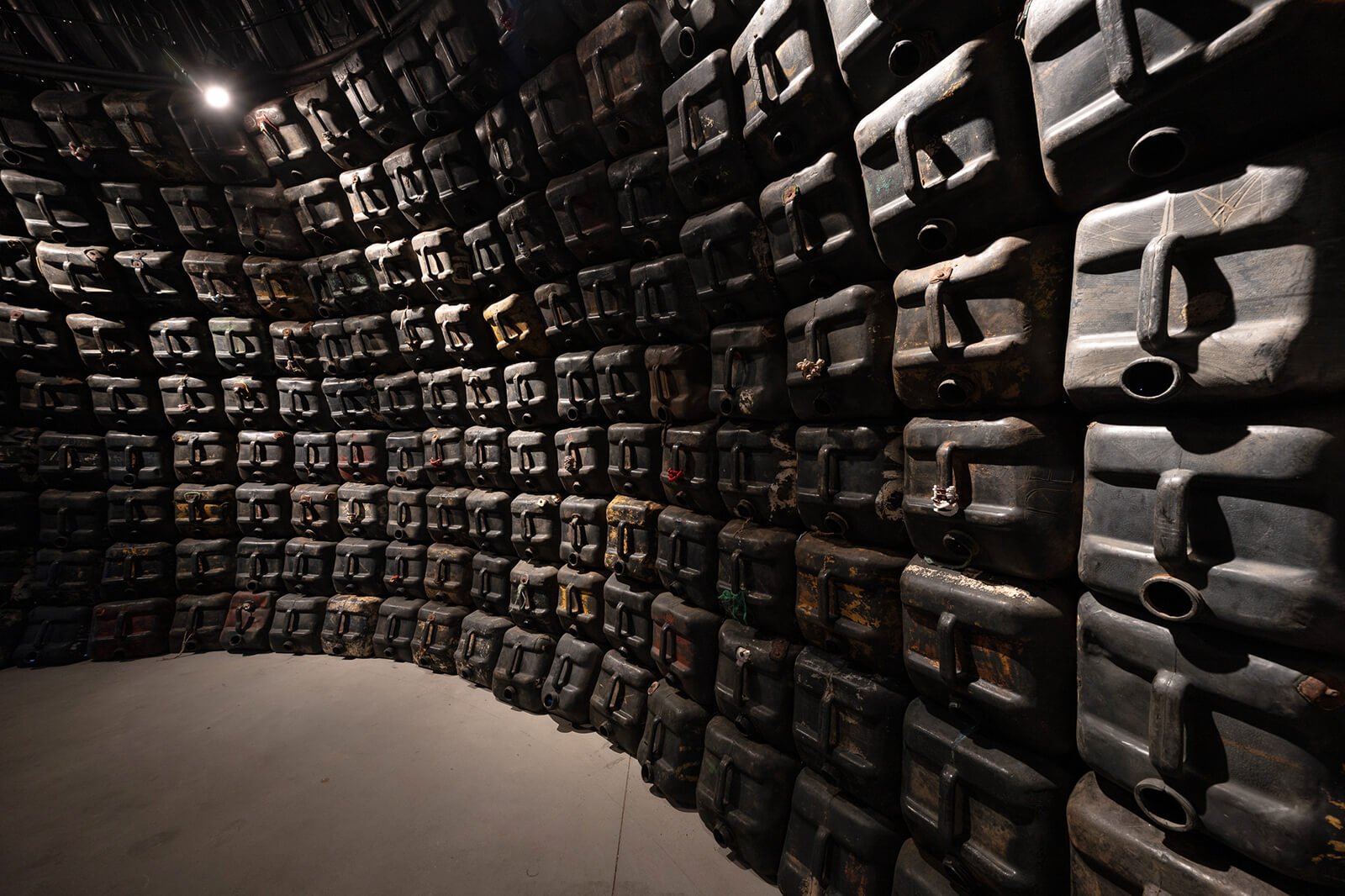
As African representation at the Venice Biennale grows, it promises to enrich the event with a more inclusive and dynamic perspective on art. Despite many obstacles, these pioneering African pavilions showcase the diverse cultural identities of their respective nations. STIR takes a look at what the new African pavilions are exhibiting in this year’s edition.
Benin Pavilion
Everything Precious Is Fragile, curated by Azu Nwagbogu, examines vulnerability and resilience. The pavilion features works by Romuald Hazoumè, Moufouli Bello, Ishola Akpo and Chloé Quenum, who respond to a curatorial brief that considers four central themes: the Amazon or Agojie woman; the slave trade; Gelede philosophy; and the Vodun religion. The four themes seamlessly converge through (Beninese) feminism and eco-feminism, in which Benin’s efforts to preserve its cultural heritage are evident. In a rousing conversation with Hazoumè, he revealed to STIR the profound concept in his sculptural dome crafted from repurposed petrol cans. As we enter its core, the scent of petrol stimulates the senses, setting the stage for an immersive journey. There is a celestial display above—a canopy with twinkling lights echoing the stars. The ambience shifts, enveloping viewers in the rhythmic beats of drums and the soul-stirring harmonies of African women—a tribute to the formidable Agojie warriors of Dahomey. Within this sacred space, Hazoumè invokes a visceral connection to the ancestral spirits, urging visitors to embrace the feminine power within the pulsating elements surrounding them. Hazoumè’s creation is a multi-sensory invocation to the ancestors where sensitivity and power intertwine.
Senegal Pavilion
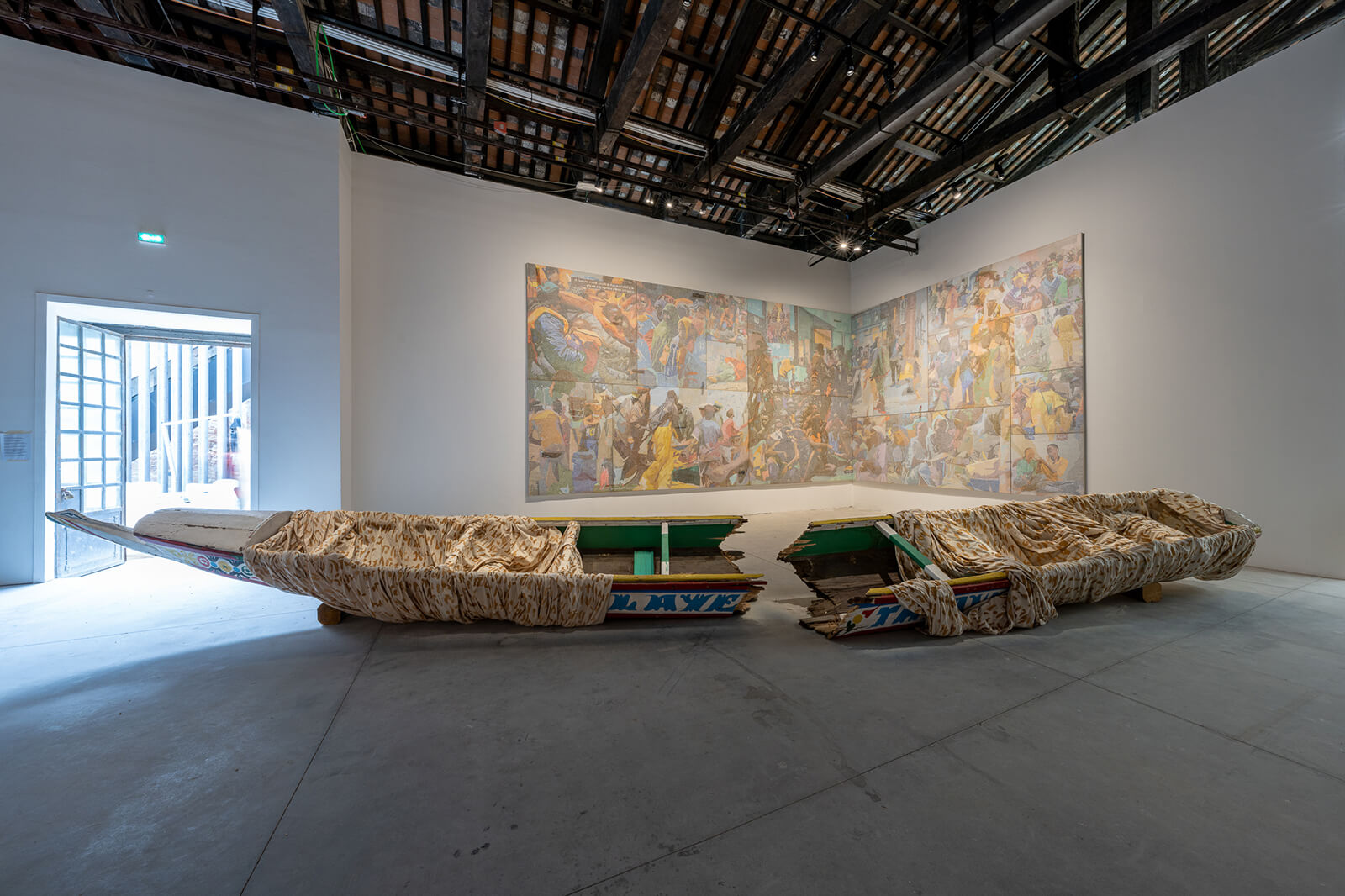
In the Senegal Pavilion, curated by Massamba Mbaye, the Franco-Senegalese artist Alioune Diagne takes centre stage with his exhibition Bokk – Bounds. “Bokk” means “what is shared” and “held in common” in the Wolof language. Diagne’s “Figuro-abstro” painting style, inspired by calligraphy, symbolises connection and unity and reflects on poignant challenges faced by Africa, including migration, resource depletion, poverty and discrimination. With a traditional canoe featuring his artwork as a centrepiece, Diagne invites viewers to contemplate the shared humanity that transcends borders and cultures, fostering empathy and understanding in an increasingly divided world.
Ethiopia Pavilion
Curated by the poet, author and broadcaster Lemn Sissay, the Ethiopia Pavilion presents Prejudice and Belonging, featuring the works of Tesfaye Urgessa. Urgessa’s art merges Ethiopian iconography with traditional figurative paintings, exploring themes of race and identity politics within the intimate setting of domestic space. Housed in the opulent Palazzo Bollani, the exhibition juxtaposes Urgessa’s large-scale works with smaller pieces, inviting reflection on migration and fragility. The historical context of Ethiopia’s relationship with Italy adds significance, highlighting the former’s resilience in the face of colonialism and oppression.
Tanzania Pavilion
Tanzania makes its debut at the Venice Biennale 2024 with the pavilion A Flight in Reverse Mirrors, curated by Enrico Bittoto. It features a group exhibition with the artists Happy Robert, Naby, Haji Chilonga and Lutengano Mwakisopile, exploring the concept of the Other. Bittoto emphasises to STIR the pavilion’s departure from Western art market expectations, presenting what he calls “the real African art”. Visitors can explore four imaginary rooms representing different eras in Tanzanian history, experiencing woodcuts and paintings depicting everyday life, supported by a soundscape. Bittoto notes that the only Western element is the donated music reinterpreted by Peter Gabriel, featuring the Zawose Queens. Despite limited funding, Tanzania’s intimate pavilion space offers a moving, immersive journey, whisking viewers away to distant eras and African locales. With its array of antique furniture, vintage televisions, captivating artwork and curated books on display, the exhibit serves as a portal to honour the vibrant cultural legacy of East Africa, both past and present.
The mandate of the 60th Venice Biennale, which aims to highlight under-represented artists and art histories, aligns with STIR’s own philosophy of challenging the status quo and presenting powerful perspectives. Explore our series on the Biennale, STIRring ‘Everywhere’ in Venice, which brings you a curated selection of the burgeoning creative activity in the historic city of Venice, in a range of textual and audiovisual formats.



